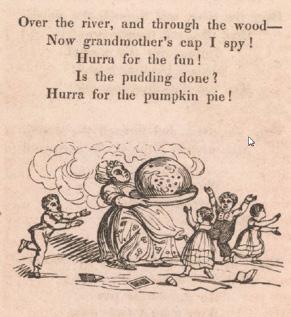In Pumpkin Pie Crust We Trust!
Some 400 years in the ‘baking’
History: Pumpkin Pie
By Donovan Darling, Staff Writer

Pumpkin pie, is arguably more American than apple pie. But where did this spiced, crusted, orange squash custard come from? Pumpkins were first grown in Central America in 5500 B.C. and were one of the first foods brought back from the New World by European explorers. The first mention of pumpkins dates back to 1536, and they were regularly grown in England within a few years and called “pumpions,” based on the French word “pompon,” the derivation of “pompom,” which refers to a chrysanthemum or dahlia’s rounded flowers.
Current data suggests pumpkin pie dates back almost 400 years. A French cookbook from 1653 has a recipe that instructs chefs to boil a pumpkin in milk, strain and place in a crust. In the 1670 edition of “Gentlewoman’s Companion,” English writer Hannah Woolley suggests a pie be filled with varied layers of apple and pumpkin, sweet marjoram, thyme and spiced rosemary. A crust, however, sounds like it was optional. One New England recipe detailed using a hollowed-out pumpkin, filling it with sweet spiced milk and cooking it right in a fire. And an English variant recipe included sliced apples.
England’s pie culture is legendary, known for making complex pastries for centuries. It’s likely that the Pilgrims who sailed for America on the Mayflower in 1620 were familiar with pumpkins, both as fruit and dessert, as well as the indigenous tribe of the Wampanoag, who helped these Pilgrims survive their first year in the Plymouth Colony. A year after their arrival, on what has become known as the first Thanksgiving, 50 colonists and 90 Wampanoag celebrated the harvest for three whole days, and pumpkins were likely part of that meal.
By the 18th century, pumpkin pie was a common dish for Thanksgiving, as the holiday had become important in New England. The Connecticut town of Colchester famously postponed Thanksgiving a whole week because they lacked the molasses to make pumpkin pies. Later in 1796, Amelia Simmons’ cookbook “American Cookery” included two pumpkin pie recipes, one which is very similar to the custard version we know today.
Interestingly, pumpkin pie gained political significance when abolitionists, for whom pumpkin pie was a common dish in New England, featured it in their novels and poems. Abolitionist Lydia Maria Child ended her 1842 poem about a New England Thanksgiving with the line: “Hurra for the pumpkin pie!” Abolitionist Sarah Josepha Hale rallied for decades for Thanksgiving to become a national holiday, featuring pumpkin pie in her 1827 anti-slavery novel “Northwood:” “yet the pumpkin pie occupied the most distinguished niche” …among a table full of desserts.

When Abraham Lincoln declared Thanksgiving a national holiday in 1863, many Confederates saw it as a further imposition of Yankee traditions. Following the Civil War, Thanksgiving and pumpkin pie spread across the country and were written about in many women’s magazines. Libby’s, a Chicago meat-canning company, began producing canned pumpkin in 1929, a product that became essential to every household on Thanksgiving and replaced the labor-intensive task of roasting and straining fresh pumpkin. And the rest
was history.
Grown for 7,500 years and baked for nearly 400 years, pumpkin pie has come a long way to arrive in cans on pantry shelves and in grocery store bakeries. When enjoying a delicious slice of pumpkin pie this Thanksgiving, consider its long and winding history and the countless individuals who had a hand in its creation: French and English pastry chefs, early colonists, the Indigenous, magazine editors, housewives, abolitionists and even Abraham Lincoln.





